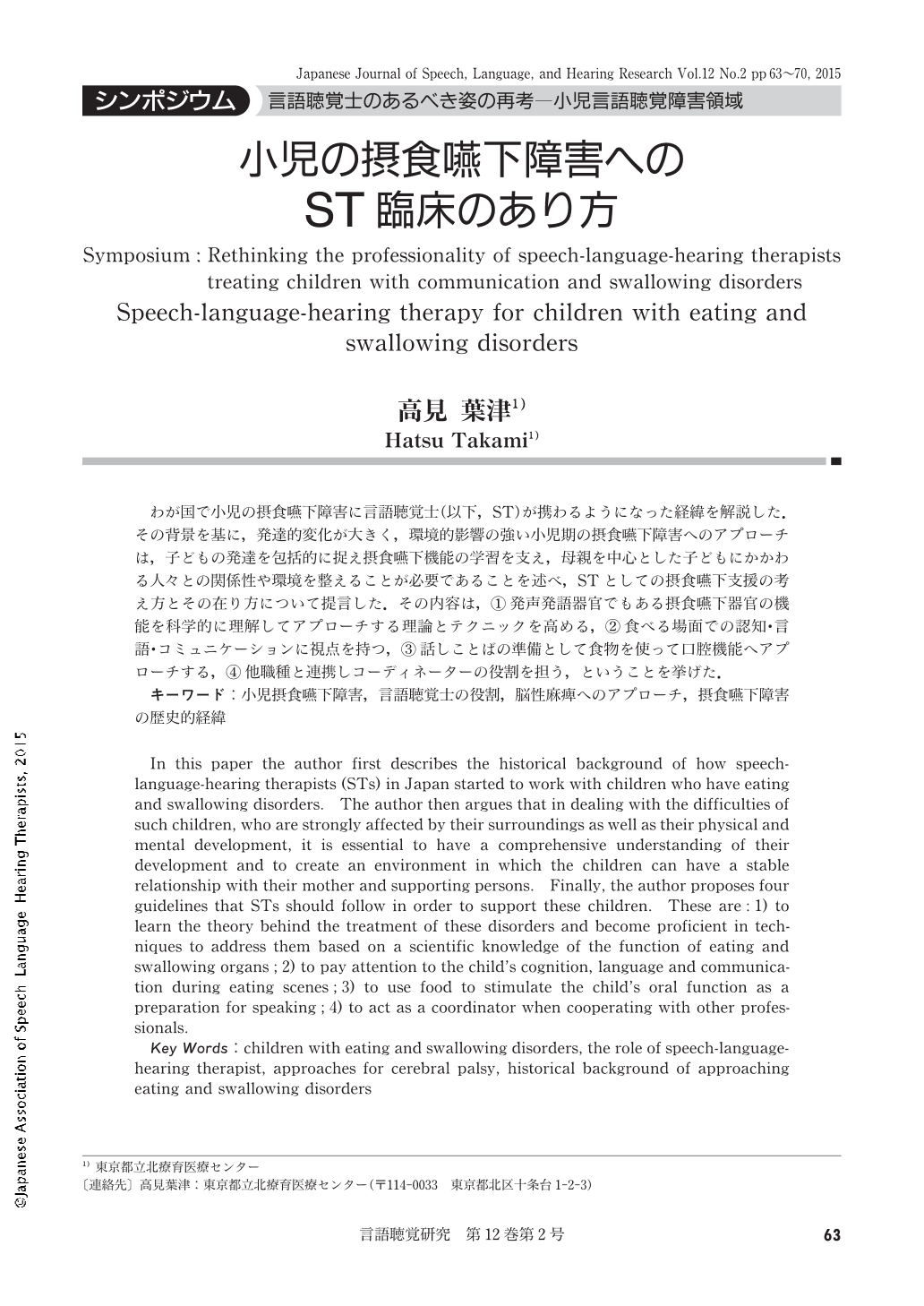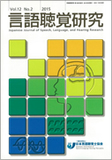Japanese
English
- 有料閲覧
- Abstract 文献概要
- 1ページ目 Look Inside
- 参考文献 Reference
わが国で小児の摂食嚥下障害に言語聴覚士(以下,ST)が携わるようになった経緯を解説した.その背景を基に,発達的変化が大きく,環境的影響の強い小児期の摂食嚥下障害へのアプローチは,子どもの発達を包括的に捉え摂食嚥下機能の学習を支え,母親を中心とした子どもにかかわる人々との関係性や環境を整えることが必要であることを述べ,STとしての摂食嚥下支援の考え方とその在り方について提言した.その内容は,①発声発語器官でもある摂食嚥下器官の機能を科学的に理解してアプローチする理論とテクニックを高める,②食べる場面での認知・言語・コミュニケーションに視点を持つ,③話しことばの準備として食物を使って口腔機能へアプローチする,④他職種と連携しコーディネーターの役割を担う,ということを挙げた.
In this paper the author first describes the historical background of how speech-language-hearing therapists(STs)in Japan started to work with children who have eating and swallowing disorders. The author then argues that in dealing with the difficulties of such children, who are strongly affected by their surroundings as well as their physical and mental development, it is essential to have a comprehensive understanding of their development and to create an environment in which the children can have a stable relationship with their mother and supporting persons. Finally, the author proposes four guidelines that STs should follow in order to support these children. These are:1)to learn the theory behind the treatment of these disorders and become proficient in techniques to address them based on a scientific knowledge of the function of eating and swallowing organs;2)to pay attention to the child's cognition, language and communication during eating scenes;3)to use food to stimulate the child's oral function as a preparation for speaking;4)to act as a coordinator when cooperating with other professionals.

Copyright © 2015, Japanese Association of Speech-Language-Hearing Therapists. All rights reserved.


